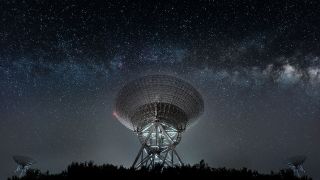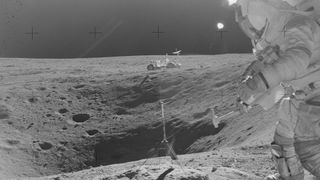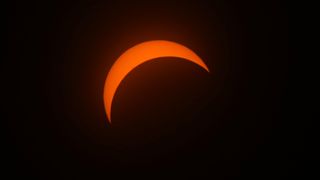Astronomy

Staring up into the night sky, it's easy to be overwhelmed by the seemingly infinite expanse of space, with every pinprick of light in the vast canopy of darkness a star holding secrets forged by 13.8 billion years of the universe's existence. And yet, despite its great age and the unfathomable distance between us and even our nearest neighbor, through the study of astronomy we are able to understand more about the world beyond our atmosphere.
Join our expert writers and editors as we reveal the greatest mysteries in cosmology, such as how black holes form, and explore celestial bodies like exoplanets and nebulas, that are scattered throughout our universe. You will also discover how scientists are pushing the boundaries of space exploration using observatories like the James Webb Space Telescope with the latest astronomy news, features and articles.
Discover more about astronomy
Explore Astronomy
Latest about Astronomy

The James Webb telescope found hundreds of 'little red dots' in the ancient universe. We still don't know what they are.
By Fabio Pacucci published
These small galaxies are either crammed with stars or they host gigantic black holes. The data astronomers have collected continues to puzzle them.

Space photo of the week: The 1st image of an alien planet
By Jamie Carter published
The Very Large Telescope in northern Chile imaged a "super-Jupiter" exoplanet called 2M1207b, precisely 20 years ago this week. This was the first direct visual confirmation of a world beyond our solar system.

Star-packed Triangulum Galaxy shines in new Hubble Telescope image
By Samantha Mathewson published
The Triangulum Galaxy, the third-largest member of the Local Group of galaxies, is shining with star formation in a new image from the Hubble Space Telescope.

Scientists make lab-grown black hole jets
By Keith Cooper published
By using protons to probe how a magnetic field responds to an expanding plasma, experimenters have replicated the particle jets spewed out by active black holes.

Asteroid 10 times bigger than the dinosaur-killing space rock smashed Jupiter's largest moon off its axis
By Harry Baker published
New simulations show that Jupiter's massive moon Ganymede was knocked off its axis when it was struck by a roughly 90-mile-wide asteroid around 4 billion years ago. The colossal collision was likely one of the biggest asteroid impacts the solar system has ever seen.

The oldest evidence of Earth's atmosphere may be hiding in rocks on the moon
By Stephanie Pappas published
The moon hasn't had a magnetic field for 4.36 billion years. That means it could hold fragments of the ancient Earth.

A particularly active 'aurora season' could be just weeks away
By Jamie Carter published
September could be a prime time to see vibrant auroras, thanks to a quirk of Earth's tilt that leads to more intense geomagnetic activity around the equinox.

One of the universe's biggest paradoxes could be even weirder than we thought, James Webb telescope study reveals
By Ben Turner published
New James Webb Space Telescope results have revealed that there may not be a Hubble tension after all. But contradictions within the findings point to a deeper mystery.

Astronomers discover oldest known eclipse reference in 6,000-year-old Hindu text
By Paul Sutter published
A flowery passage in a 6,000-year-old Hindu text may be the earliest known reference to a solar eclipse, describing the sun as being "pierced" with darkness and gloom and proposing that evil beings had caused the sun's "magic arts to vanish."

Asteroid slams into Earth triggering stunning green 'fireball' above the Philippines — 8 hours after it was 1st spotted
By Harry Baker published
On Wednesday (Sept. 4), astronomers spotted a never-before-seen asteroid, 2024 RW1, around eight hours before it entered Earth's atmosphere. The "harmless" space rock quickly burned up as predicted, creating a bright green streak across the night sky before spectacularly exploding.
Sign up for the Live Science daily newsletter now
Get the world’s most fascinating discoveries delivered straight to your inbox.
